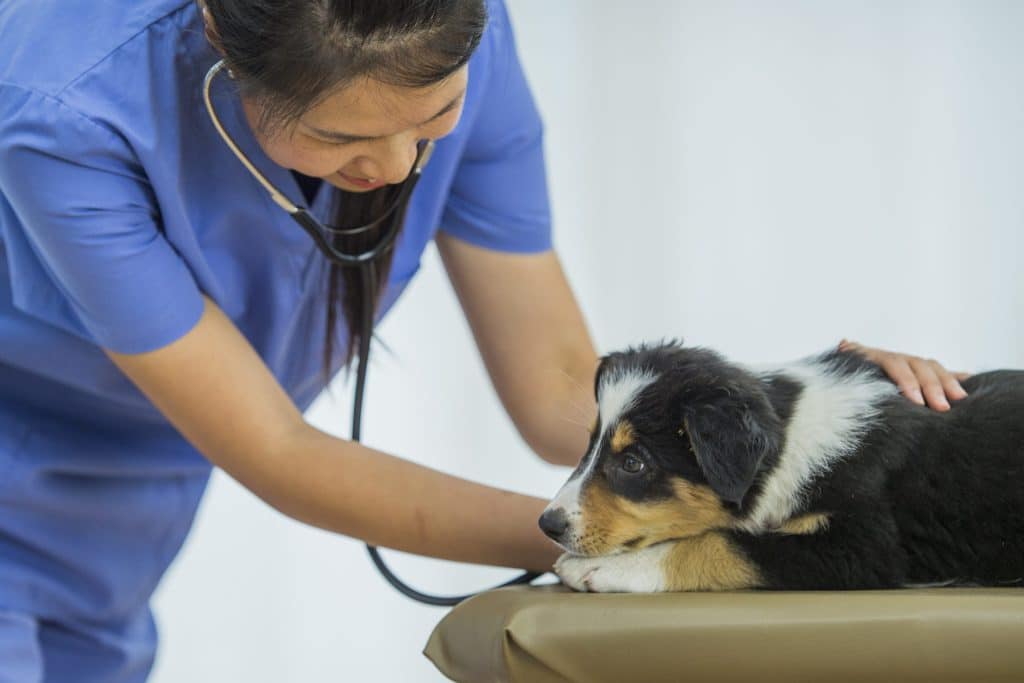Caring for a dog is a deeply rewarding experience filled with moments of joy and companionship. However, it also comes with monitoring their health and well-being. Recognizing the early signs of illness in dogs is crucial for their longevity and quality of life. This article explores key indicators that every dog owner should be aware of to detect health issues early. Owners can ensure prompt medical attention by staying vigilant and understanding what to look for, potentially saving their canine companion from serious health complications.
Understanding Your Dog’s Normal Behavior

Observing and understanding a dog’s normal behavior is the first step in recognizing when something is amiss. Dogs have unique behaviors and routines, from eating habits to energy levels and interaction styles. Knowing what is typical for a dog allows owners to quickly notice any deviations that might signal health problems. Regular interaction and playtime strengthen the bond between dog and owner and provide opportunities to observe any changes in behavior or mood.
In addition to active observation, maintaining a health diary can be immensely beneficial. This diary can track various aspects of a dog’s life, such as sleeping patterns, reactions to food, and daily activities. Consistent record-keeping helps identify subtle changes over time, which might be easily overlooked otherwise.
Changes in Eating and Drinking Habits

A change in a dog’s eating and drinking habits is often one of the first indicators of illness. A sudden decrease in appetite or, conversely, an unusual increase can signify various health issues, ranging from stress and anxiety to more serious conditions like diabetes or kidney disease. Dog owners should monitor how much their pets eat and their enthusiasm for food, which can be equally telling.
Similarly, changes in drinking habits warrant attention. Increased thirst might be a symptom of diabetes or kidney problems, while a decrease could indicate nausea or other issues. It’s essential to note these changes and consult a veterinarian, especially if they persist or are accompanied by other symptoms. Early veterinary intervention can make a significant difference in managing and treating many conditions.
Alterations in Activity Levels

Activity levels in dogs vary with age, breed, and individual temperament. However, any abrupt change, such as an unusually lethargic or hyperactive behavior, should raise a red flag. Lethargy can be a sign of heart disease, parvovirus, leptospirosis, or even depression, while excessive activity might be due to pain or discomfort.
Regular exercise and play are vital for a dog’s physical and mental health. If a normally active dog shows reluctance to exercise or play or a usually calm dog becomes restless or agitated, these could be early signs of health problems. Recognizing and responding to these changes promptly by seeking veterinary advice is crucial for the dog’s well-being.
Behavioral Changes and Unusual Habits

Sudden behavioral changes in dogs, such as increased aggression, fear, or anxiety, can be indicators of underlying health issues. Pain, discomfort, or illnesses like thyroid dysfunction can manifest as behavioral changes. It’s important to note any new behaviors, such as excessive barking, unexplained aggression, or undue fearfulness.
Unusual habits, such as hiding, excessive licking, or paw chewing, can also be signs of illness. Environmental factors, such as changes in the household or routine, can also affect a dog’s behavior. Understanding these changes and seeking professional advice helps address the dog’s physical and emotional health.
Physical Signs of Illness

Visible changes in a dog’s physical appearance can indicate health problems. A dull coat, unexplained weight loss or gain, red or watery eyes, and noticeable changes in posture can all point to various health issues. Regular checks for any lumps, bumps, or changes in skin condition are essential.
It’s also important to recognize signs of pain or discomfort in dogs. These can include limping, reluctance to be touched in certain areas, or changes in sleeping positions. Regular grooming and health checks can help identify these physical changes early, enabling prompt veterinary consultation and treatment.
Digestive and Elimination Issues

Changes in a dog’s digestive system and elimination patterns can be key indicators of health problems. Symptoms such as vomiting, diarrhea, constipation, or changes in stool color and consistency should not be ignored. They can be signs of dietary indiscretion, infections, parasites, or more serious conditions like cancer or organ failure.
Similarly, changes in urination patterns, such as increased frequency, difficulty urinating, or blood in urine, are significant. These symptoms can indicate urinary tract infections, kidney disease, or other serious health issues. Monitoring and responding to these changes can be critical for a dog’s health.
Respiratory Symptoms and Coughing

Abnormal breathing patterns, persistent coughing, or wheezing are serious dog symptoms. These can be signs of respiratory infections, allergies, heart disease, or other respiratory conditions. Noticing and acting upon these symptoms early can be critical, especially since respiratory issues can rapidly worsen.
Persistent coughing, especially in older dogs, should be evaluated by a veterinarian. It could be a sign of chronic bronchitis, heartworm disease, or even heart failure. Early detection and treatment of respiratory conditions can greatly improve a dog’s quality of life and prognosis.
Preventive Measures and Regular Vet Visits

Preventive care plays a crucial role in maintaining a dog’s health. Regular vaccinations, parasite control, and health screenings are essential to preventive care. They protect dogs from common diseases and aid in the early detection of health issues.
Establishing a regular schedule for veterinary check-ups is vital. Routine visits allow veterinarians to detect potential health problems before they become serious. They also allow dog owners to discuss concerns or observations about their pet’s health.
The Bottom Line
Recognizing the early signs of illness in dogs is critical to responsible pet ownership. It requires observation, understanding, and a proactive approach to health care. By being attentive to changes in behavior, physical condition, and routine habits, dog owners can ensure prompt medical attention for their canine companions. This helps in effectively managing health issues and strengthens the bond between dogs and their owners, ensuring a happy, healthy life together.